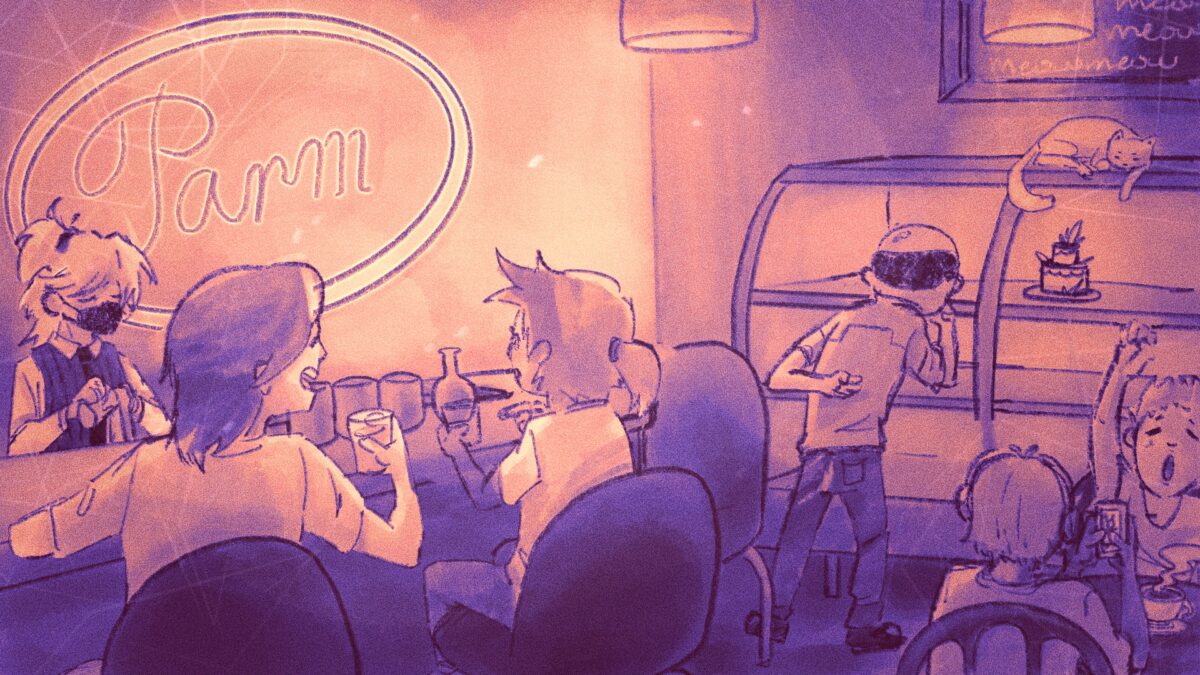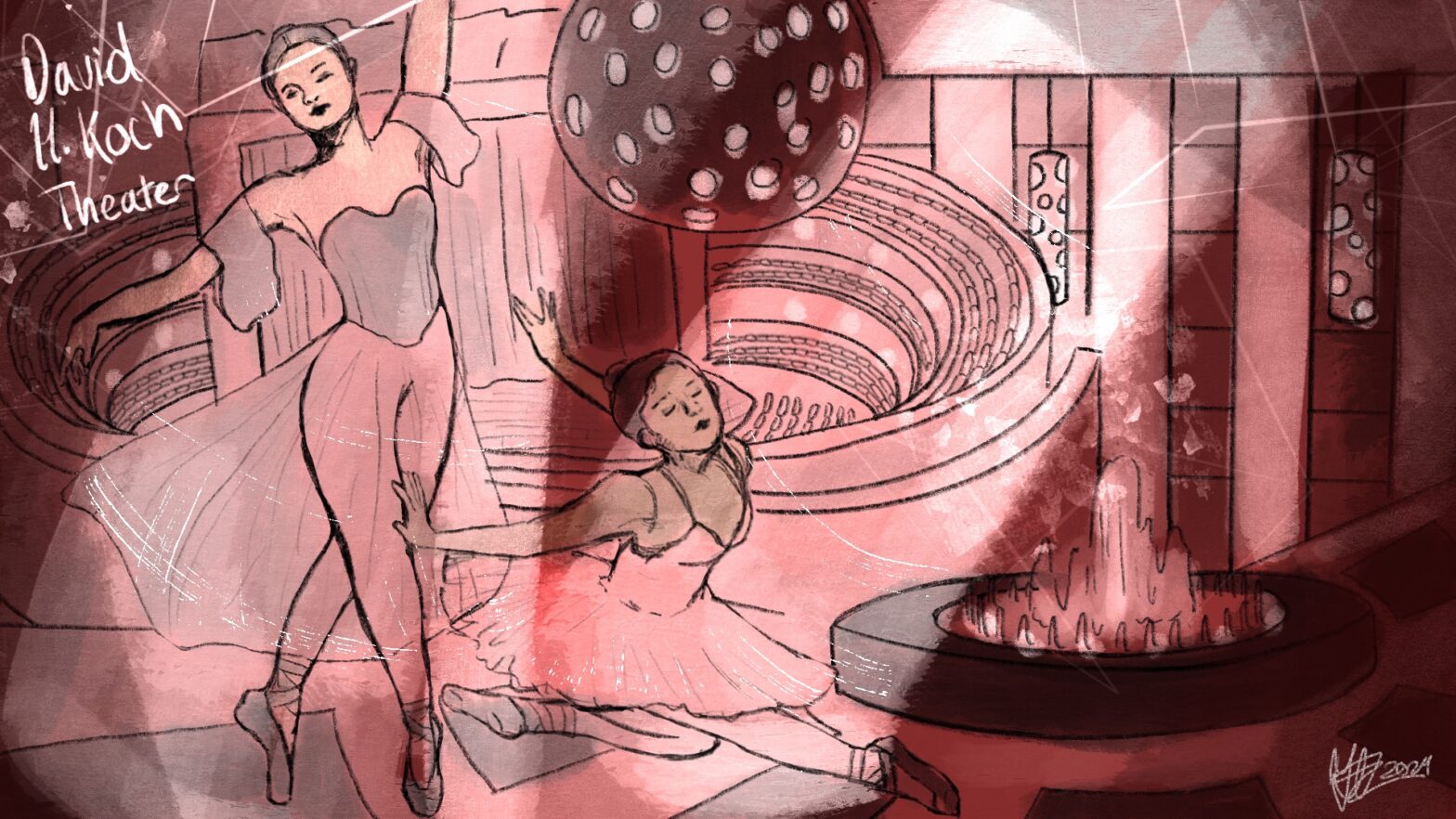This series is published under a pseudonym in order to preserve the nonjudgmental atmosphere of college nightlife and focus on the overall experience of the location(s) described.
Welcome to Nightcap Notes — a monthly exploration of hidden gems, old favorites, and headaches to avoid at night in New York City. This week we dine at Parm (235 Columbus Ave.) and watch the New York City Ballet at the David H. Koch Theatre (20 Lincoln Center Plaza).
Happy finals season, my fellow insomniacs and intrepid adventurers,
The last few weeks of school can feel like running a marathon in the peak of an NYC summer — your body dripping with sweat, somehow sick with ten different ailments, a deep desire to be on a tropical vacation instead, and exhausted in ways you never thought possible.
Unfortunately this writer can’t provide you with plane tickets to Tahiti, but instead of trying to recreate the sensation by spending $14 on a Mango Passion smoothie, I propose a delusional escapade into high society at the ballet.
Before you don your imaginary suit and begin your cultured cosmopolitan evening, enjoy the comfort that only a plate of carbohydrate goodness and a drink or two can provide at a new favorite haunt of this writer. The destination? Parm, a semi-casual small Italian chain.

There are four locations in the city: one is a 14 minute walk from Washington Square Park, if the name sounds familiar, and the first one opened in 2011. The owners, restaurateur Jeff Zalaznick and Michelin star chefs Mario Carbone and Rich Torrisi, also own the likes of Carbone and Sadelle’s, so come with high expectations. The vibe at Parm is more casual than its counterparts; the location that my fellow procrastinator and I went to on the Upper West side was reminiscent of an old Italian diner complete with hexagonal porcelain inspired tiles, illustration-style wallpaper with a variety of food and drinks, old timely hanging pendant lights, and a “Parm the lifestyle” sign with a giant sandwich in the center.
Arriving at around 6:20 p.m., in order to take full advantage of their 4-7 p.m. happy hour special, we chose to sit at the bar located in the left hand corner of the room. Only two seats in the middle were open out of the tightly packed 13, so we did some pre-feast aerobics to wedge ourselves into the space. In terms of happy hours, Parm offers some excellent deals: $6 appetizers and half off their typically $15 wines and cocktails; the beers are cheaper, but we were utterly uninterested.
Our food order consisted of mozzarella sticks, the Pesto Arancini — which is only offered on the happy hour menu — and two plates of Fusilli Bolognese. For drinks, we got the Moscow Mule and a glass of Montepulciano, and they were both scrumptious. The bartender, who was our waiter for the night, was attentive and despite our close proximity, not at all invasive during the meal. All of the food was good, but the appetizers were by far the best — crispy, gooey, flavorful, and utterly delicious.
Finishing up our savory course with little time to spare before the 7:30 p.m. show at the ballet, we skipped dessert and left around 7:00 p.m. to complete a 10-minute walk to the David H. Koch Theater. A quick aside for all my dessert lovers: if like me, you have a slight obsession with tiramisu, it is sadly not on their menu.
Exemplifying the broke college student trope, we purchased our tickets through a special initiative that the New York City Ballet offers, the 30 under 30 program. As the name suggests, if you are under 30, you can sign up online to purchase tickets the week of for their available programs for $30. The seat offerings can vary from the orchestra through the fourth ring, but when we signed up, seats were primarily available in the third ring. Unless you’ve purchased tickets in-person either ahead of time or the day of, you have to pick up the tickets at the box office inside. It was only a five-minute wait in line that night, but be sure to factor that into your arrival time.
Also budget time for a theater wander. Built in 1964, the theater is an architectural delight, especially if you love gold. There is a large beaded curtain on the front window consisting of eight million gold-colored metal balls, representative of every citizen in New York City in 1964, an 18k gold leaf ceiling in the promenade, and a breathtaking two ton, gold-toned globe chandelier in the theater. If you prefer marble, check out the two giant Elie Nadelman Carrara sculptures — “Circus Women” and the “Two Nudes.”
There were two shows to choose for the week of April 22: “Masters At Work” and “All Balanchine.” We chose the latter, which consisted of four different dances by the deceased ballet choreographer and co-founder of the New York City Ballet, George Balachine, which showed off a variety of classical styles.
The show, which started promptly at 7:30 p.m., lasted for a little under two hours with two intermissions and two shorter “pauses.” Because the shows switch so frequently, I won’t bore you with the specifics of each ballet that you might never see, but for the avid ballet enjoyers, here are a few quick notes. All of the shows had some love component — requited, unrequited, tragic, and triumphant. The ballet dancers were incredibly coordinated, athletic, and graceful — it was like watching people float rather than dance. Don’t come for the costumes; the ones in the final show were lovely, but otherwise they were, as my friend put it, like a mismatched Christmas tree. Lastly, clapping culture is prolific at the ballet; for each performance there were at least three separate rounds of applause.
If I had to choose a brief section of the performance I’d recommend seeing, or at the very least listening to, it would undoubtedly be the second Adagio movement and the final Allegro Vivace movement of Symphony in C by George Bizet. The Adagio movement was haunting and the corresponding dance expressed the pain in its melody. In the choreography of the final movement, which contained the entire cast, there was a particular moment when the dancers formed a three-walled box — with the open side toward the audience — as some of the dancers did a fanning motion while others were lifted and moving within the space, creating a chaotic synchronicity.
As you step outside after the final four rounds of applause, take in the sight of the lit-up Revenson Fountain while you plan your journey home for a semi-early night, or perhaps a nightcap, leaving behind sophistication and returning to the life of a swamped student in the morning.
Till the next night. . .







